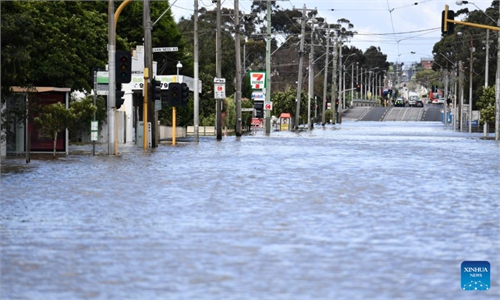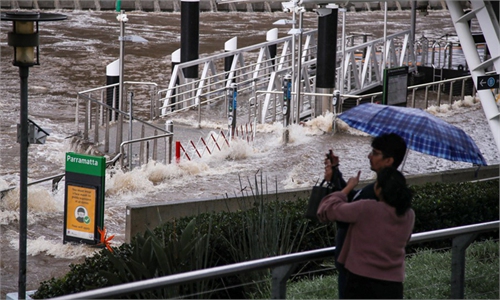Entire regions saw water extremes in 2021
UN warns droughts, flooding to impact economies, ecosystems, daily life

Photo taken on Aug. 16, 2021 shows the flood-hit area in the town of Abana, Kastamonu province, Turkey. At least 74 people died and 47 others went missing in severe floods and mudslides in the Black Sea region of Turkey, the country's disaster agency said on Monday. Floods caused by heavy rain hit the Black Sea region in the north of the country on Aug. 11, leaving 62 dead in the province of Kastamonu. Photo: Xinhua
All regions of the world saw water extremes in 2021 - both floods and droughts - and billions of people had insufficient freshwater, the United Nations said on Tuesday.
Large areas of the planet recorded drier than normal conditions in 2021, the UN's World Meteorological Organization said in its first annual State of Global Water Resources report.
The report assesses the effects of changes in the climate, environment and society on the Earth's freshwater resources - limited supplies that are under growing demand - so they can be managed better.
"The impacts of climate change are often felt through water - more intense and frequent droughts, more extreme flooding, more erratic seasonal rainfall and accelerated melting of glaciers - with cascading effects on economies, ecosystems and all aspects of our daily lives," said WMO head Petteri Taalas. "And yet there is insufficient understanding of changes in the distribution, quantity and quality of freshwater resources."
Some 3.6 billion people face inadequate access to freshwater at least one month per year. That is forecast to rise to more than 5 billion by 2050, the report said.
Between 2001 and 2018, 74 percent of all natural disasters were water-related, according to UN studies. In 2021, all regions saw devastating water extremes, the report said.
There were record-breaking floods in western Europe and the Amazon, while water levels in rivers in Paraguay and southern Brazil dropped to an all-time low.
The report assessed streamflow - the volume of water flowing through a river - over a 30-year period. Drops in water volumes were twice as widespread as rises.
Major river basins in the Americas and central Africa saw water volumes shrink. Rivers in northern India and southern Africa saw above average increases.
Terrestrial water storage - all water on the land surface and in the subsurface - shrank more than it grew, the report said.
Negative hot spots included Patagonia, the Ganges and Indus headwaters, and the southwestern US.
"Some of the hot spots are exacerbated by [over-extraction] of groundwater for irrigation. The melting of snow and ice also has a significant impact in several areas, including Alaska, Patagonia and the Himalayas," the WMO said.
The world's biggest natural reservoir of freshwater is the cryosphere - glaciers, snow cover, ice caps and permafrost - and changes to this reservoir affect food production, health and the natural world, the report said.
Around 1.9 billion people live in areas where drinking water is supplied by glaciers and snow melt but these glaciers are melting increasingly fast, it stressed.
AFP



